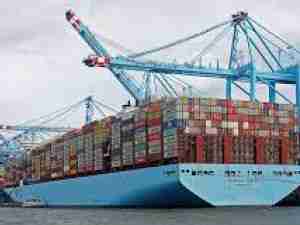Here are the latest China-US container rates, which continue to be heavily impacted by the ongoing outbreak:
• China-US West Coast prices (FBX01 Daily) rose another 6% since last week to $1721/FEU. Rates are 18% higher than the rates in 2019 at this time.
• China-US East Coast prices (FBX03 Daily) are up 1% from last week, reaching $2742/FEU. This rate is 7% lower than this week last year.
Key insights below:
1 Air and ocean prices remain stable. On the ocean cargo side, this is likely due to industry consolidation contributing to stabilized sailings out of China. For air cargo, the addition of repurposed passenger jet capacity has helped level off rates spurred by urgent PPE demand.
2 The shutdown has triggered rapid eCommerce growth. Freightos.com data indicate that not only Amazon is benefitting from the surge. Despite the global slowdown, Freightos.com SMB shippers are logging 14% more shipments than they did at this time last year, indicating robust activity for some small or eCommerce businesses.
Analysis
Ocean
Cancelled sailings kept ocean rates stable this week, with the strict capacity management leading to another 6% increase in China-US West Coast rates and reports of rolled shipments at some Chinese ports.
The ability to better manage supply may be attributable to consolidation of ocean carriers over the last few years. The result is the buoyed rates we’ve seen during the pandemic, despite flagging demand, and even the possibility of an increase of rates if shipping volumes rebound before capacity has been reactivated
Air
After ongoing 25% growth in rates on a near-weekly basis, air cargo export from China seems to have stabilized at about $14-15/kg, up from just under $3/kg in February. Peak PPE demand and limited capacity continue to keep air cargo rates high but level this week, according to Freightos.com and WebCargo data. This demand and China’s strict PPE customs inspections are causing disruptions to some shipments out of Shanghai.
Despite these shipments, air cargo volumes remain down significantly due to the outbreak. The good news is that volumes seem to be stabilizing, which may indicate the start of a rebound as EU and US economies start to reopen.
eCommerce vs. Brick and Mortar
While brick and mortar retail, not to mention the trucking industry that depends on it, have been hit extremely hard by the shutdown, the resulting shift to eCommerce has been a boon not only for eCommerce giants, but possibly for SMBs as well.
For Amazon, as stores close, some major brands that had previously refused to sell on its marketplace are now on Amazon.com. Announcements this week also show that the surge in eCommerce has supported Amazon’s expansion of its US logistics footprint in both trucking and air.
But indications are that SMBs, especially eCommerce sellers, are also filling the void left by brick and mortar retail. Freightos.com data for SMB shipments booked through its marketplace over the last four weeks show that despite the economic downturn and shutdown, SMBs are 14% more active importing than they were over the same period in 2019.
While PPE played a role, it’s certainly not the only factor. Though 7% of shipments booked on Freightos.com over the last four weeks were PPE related, other well-represented segments include sporting goods (11%) and housewares (26%).
These numbers show resiliency among SMBs during the crisis, but whether or not the consumer shift to eCommerce will stick once the economy is able to open up again remains a big question.










